If you suffer from asthma, breathe easy – yoga can help.
Asthma is a chronic disease, marked by inflammation that narrows the airways of the lungs. (1) These sensitive airways can react strongly to inhaled substances, tightening the surrounding muscles and leading to the wheezing, coughing, chest tightness, and shortness of breath known as an asthma attack. Asthma symptoms can be mild and eventually go away, but they can also worsen over time.
Yoga can help with asthma by opening up the throat and chest to help ease breathing. Breathing exercises, or pranayama, have been shown to improve lung function by reducing the severity of symptoms, strengthening the lungs, and improving breathing capacity. (2) Pranayama is also beneficial for calming the mind and reducing stress levels, which can play a vital role in the midst of an asthma attack.
Suffering from a sore neck, back and shoulders? Get our mobility guide to ease pain and soreness.
Get The FREE Mobility Guide To Fix Your Pain Today!
Certain yoga poses like side bends, backbends, and forward folds can help relieve muscular tension around the rib cage. Inverted postures like viparita karani – also known as legs up the wall – are also beneficial in that they can help to flush out the buildup of mucus in the airways.
By combining pranayama with certain yoga poses, you can improve lung functioning and lessen your asthma symptoms. (3) All you need is a yoga block and your yoga mat.
Yoga for Asthma
Pranayama Exercises
Use the following breathing exercises to calm your mind, connect to your body, and increase your lung capacity.
Alternate Nostril Breathing (Nadi Shodhana) | 3 minutes
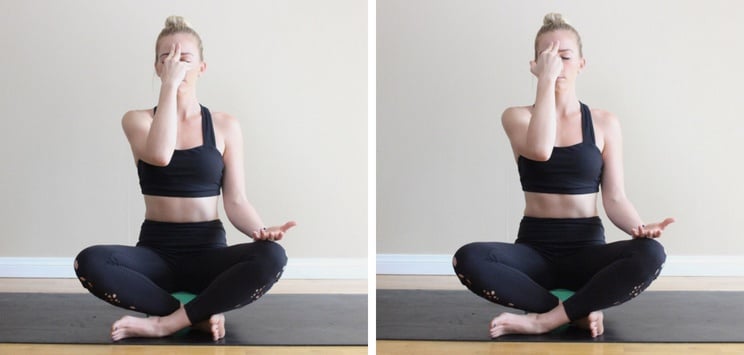
This breathing technique helps the lungs take in more oxygen while removing carbon dioxide more efficiently. It also helps reduce stress and anxiety by increasing the body’s parasympathetic (rest and digest) activity. (4)
- Begin sitting in a cross-legged position. Place a block underneath your hips if it feels more comfortable.
- Place your left hand face up on your left thigh. Place your right index finger and middle finger between your brows. Position your thumb over your right nostril and your ring finger over your left nostril.
- Plug your right nostril with your thumb and take a slow inhale through your left nostril. Pause at the top of your inhale. Then, plug your left nostril and take a slow exhale through your right nostril. Pause at the end of your exhale.
- Inhale through your right nostril. Pause at the top of your inhale. Then, plug your right nostril and exhale through your left nostril. Pause at the end of your exhale. Inhale through your left nostril, then exhale through your right.
- Close your eyes and continue this breathing for 3 minutes.
Kapalabhati Pranayama (Skull Shining Breath) | 20 breaths
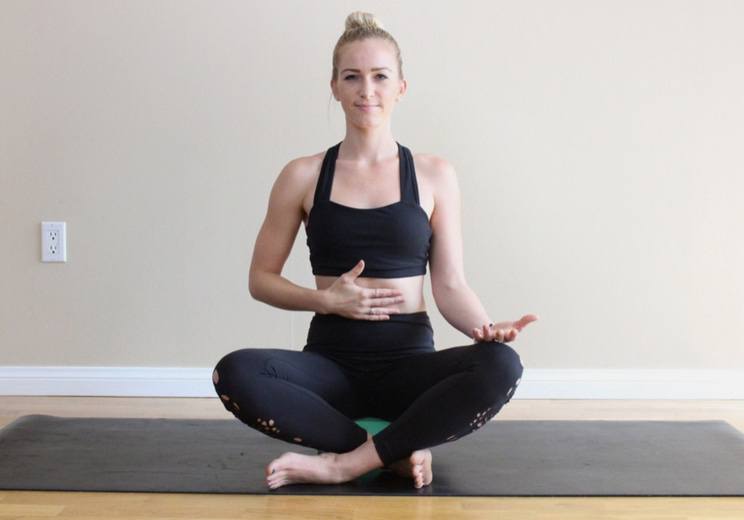
This breathing technique is great for the entire respiratory system, as it helps to strengthen the lungs through forceful exhales and passive inhales. (5) It is best to perform this technique in the morning.
Note: This breathing technique should not be performed by women who are pregnant.
- Sit on a block in a cross-legged position. Place your left hand facing up on your left thigh and place your right palm on your belly.
- Close your eyes and breathe through your nose. When you are ready to begin, inhale through your nose, then take a sharp, forceful exhale through your nose while at the same time pulling your navel up and in towards your spine to contract your abs.
- As your let the abs expand back out, take a natural inhale, and then again take a sharp exhale. Continue in a rapid succession, with about one exhalation per second, for 20 breaths. After the last exhale, allow your breath to return back to normal.
- Take a moment to notice how you feel, then slowly open your eyes and draw your awareness back to the room.
Ujjayi Breathing | Constant throughout practice
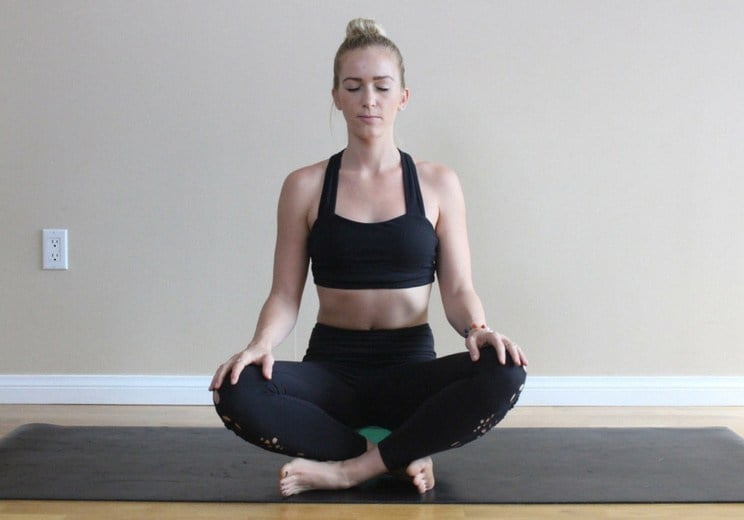
Use this breathing technique for the rest of the sequence to continue breathing efficiently and to keep your breath connected to your body.
- Staying in a cross-legged position, seal your lips closed and place the tip of your tongue on the roof of your mouth. You should feel a slight constriction in the back of your throat.
- Begin to breathe slowly in and out of the nose. Try and keep your inhales and exhales even in length.
- Your breathing should feel textured and your exhales should be audible.
- Continue breathing in this manner for the remaining yoga poses.
Yoga Poses
The following yoga poses will help to open up the muscles around the lungs to create more room for deep breathing.
Standing Half Moon | 5 breaths per side
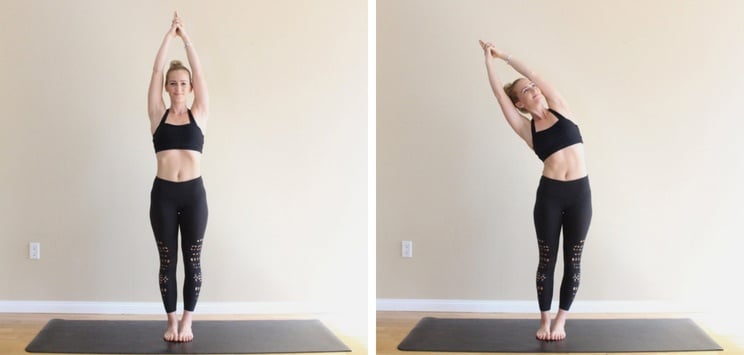
This pose helps to open up the sides of the body, relieving tension in the intercostal muscles (the small muscles between the ribs), lats, shoulders, and obliques.
- Start by standing on your mat with your big toes touching and a small space between your heels.
- Firm up your quadriceps and draw your navel up and in, engaging your abs.
- Reach your arms above your head and interlace your fingers. Release your index fingers to form a steeple.
- Take a deep inhale and reach up through your index fingers. Exhale and reach your index fingers over the right, keeping your hips and shoulders square to the front of the room.
- Gently press your hips to the left and feel a stretch through your left side. Continue breathing here for 5 slow breaths, then inhale back up to the center.
- Repeat on the other side.
Standing Forward Fold | 8 breaths
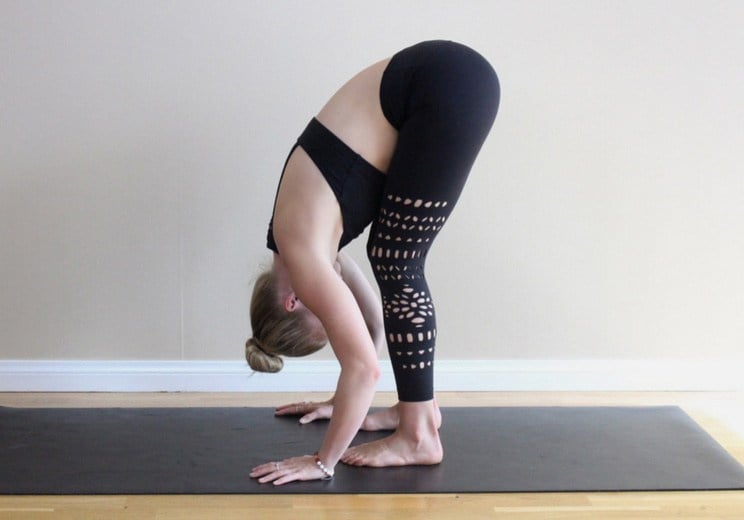
This pose helps to open up the back of the body and stimulates the parasympathetic system.
- Begin by standing with your feet hip-width distance apart. Bring your palms together in front of your chest and engage your abs. Take a small bend in the knees.
- On an exhale, fold forward at the hips, keeping a flat back. Then, reach your hands to the floor. Bend your knees as much as you need to in order to touch the floor.
- Let your head hang heavy and relax into the fold. Allow your weight to shift towards your toes slightly to feel the stretch through your hamstrings.
- Hold for 8 slow ujjayi breaths, feeling your lungs expand with each inhale and release with each exhale.
Baddha Konasana | 8 breaths
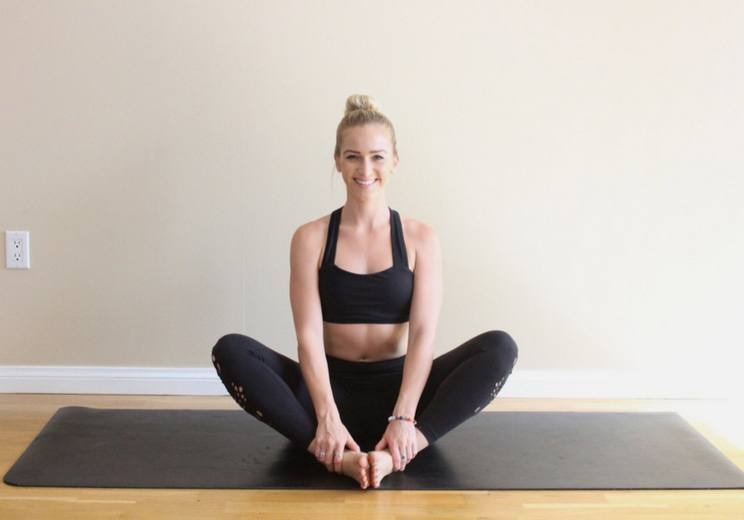
This upright hip opener helps to open up the rib cage, creating space for the lungs to expand.
- Begin seated on your mat with your knees bent and your feet on the floor. If your hips are tight, sit on a block.
- Bring the soles of your feet to touch to come into a butterfly position about a foot away from your body. Allow your knees to fall out wide.
- Place your hands on your feet and rest your thumbs on the arches.
- Take a deep inhale to find a long spine and sit up tall. Hold for eight slow, expansive ujjayi breaths.
Bound Locust Pose | 8 breaths

This backbend helps release the muscles in front of the body to allow more room for deep breathing.
- Start by lying down on your belly. Rest your forehead on your mat and bring your legs all the way together with your toes untucked.
- Interlace your hands behind your lower back. Inhale to lift your chest and thighs off your mat. Keep your gaze down at the top of the mat and lift your hands away from your body.
- Stay for 5-8 slow ujjayi breaths. Lift higher on your inhales and relax the muscles of your face on your exhales.
Marichi’s Pose | 8 breaths per side
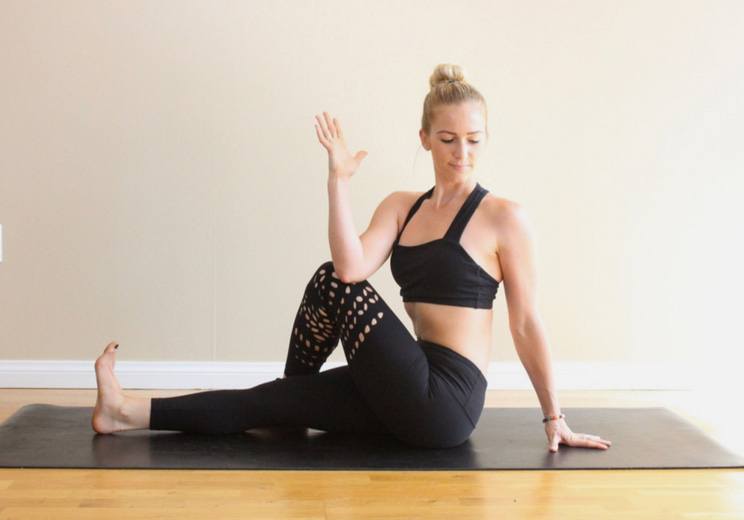
Taking deep breaths in this twisting pose helps to strengthen the lungs.
- Start by sitting on the floor with your legs extended straight out in front of you.
- Cross your right leg over your left and sit up with a tall spine. Engage your abs.
- Place your right hand behind you and inhale to place your left arm above your head. Exhale to place your left upper arm outside of your right thigh to twist to the right. Keep your neck long and gaze over your right shoulder.
- Sit up tall on your inhales and twist deeper on each exhale.
- Hold for 8 breaths, then switch sides.
Camel Pose | 5 breaths
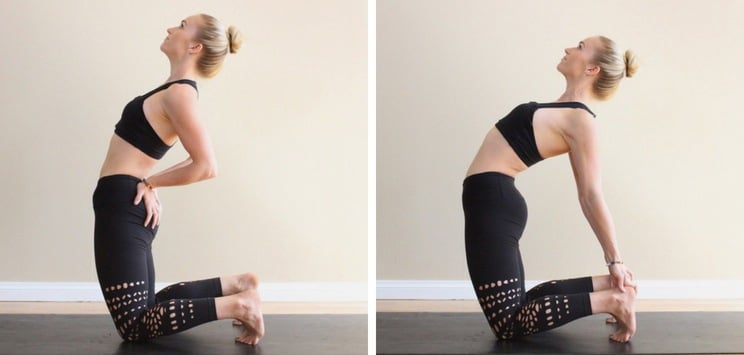
This backbending pose stretches out the front of the body, opening the front of the ribs and creating space for deeper breathing.
- Start by kneeling on your mat with your knees hip-width distance or slightly wider. Take your knees wider if you have tightness in your lower back. Tuck your toes under.
- Place your palms on your lower back with your fingers pointing down. Begin to slightly draw your pelvis under as you engage your abs and squeeze your inner thighs together.
- Inhale to lift your chest up, turning your gaze towards the ceiling. Keep your chin slightly tucked so that your neck is long.
- Continue to breathe as you bend back, keeping your hips above your knees. If you are new to this pose, you can keep your hands on your lower back. If you feel ready to go deeper, place your hands one at a time on your heels.
- Keep your abs and thighs engaged as you hold for 5 slow breaths.
Tip: You can use blocks to modify this pose. Place one on either side of your feet on the highest setting and bring your hands to rest on the blocks instead of your heels.
Downward Facing Dog | 8 breaths
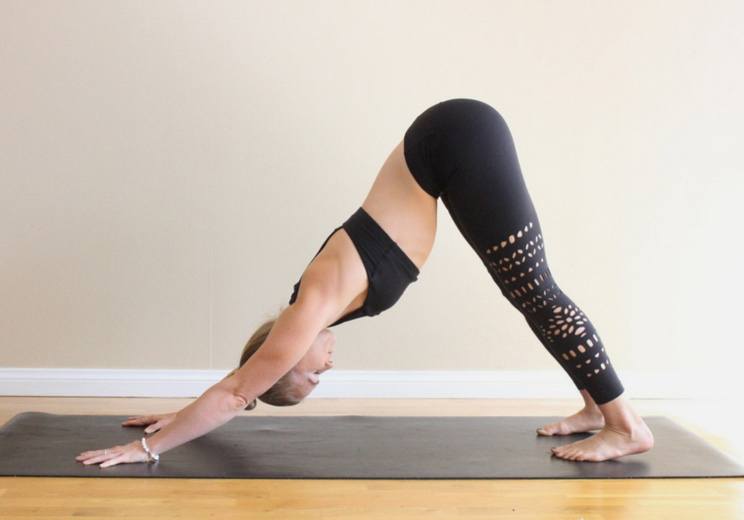
This simple inversion improves flexibility on all sides of the rib cage.
- Begin on your hands and knees in a tabletop position. Walk your hands forward a few inches so that your wrists are in front of your shoulders.
- Tuck your toes under and press into your palms as you begin to straighten your legs and lift your hips up towards the sky.
- Lift up through your tailbone as you pull your navel in towards your spine and press your chest towards your thighs. Straighten your back and gaze towards your belly.
- Hold for 8 slow breaths.
Tip: If your lower back is tight, keep a bend in your knees while holding this pose.
Legs Up the Wall (Viparita Karani) | 5 minutes
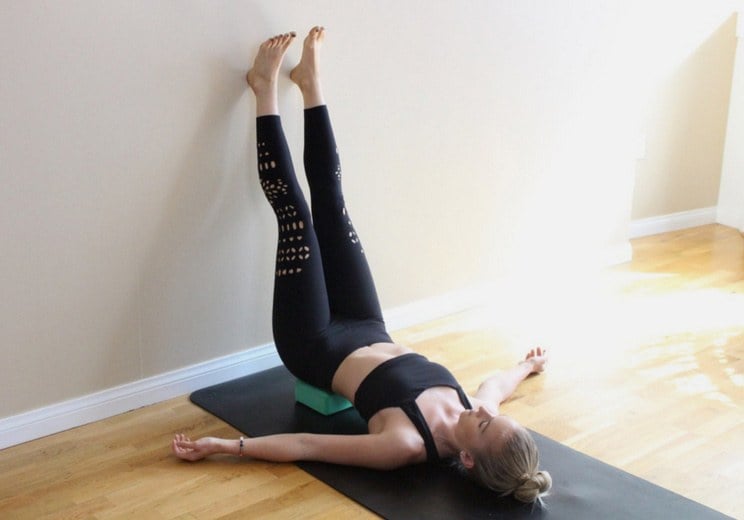
This relaxing inversion reverses blood flow out of the legs and brings blood back towards the lungs.
- Begin with a block off to one side and sit with your legs parallel to a wall.
- Roll onto your back and slide your legs up the wall. Bend your knees and press your feet into the wall to lift your hips, then slide the block underneath your sacrum.
- Extend your legs straight up the wall. Spread your arms out wide by your sides with your palms facing up. Close your eyes and find a natural breath.
- Allow the muscles of your face to relax, and hold for 5 minutes.

(Your Next Workout: 10 Easy and Gentle Yoga Modifications Anyone Can Do


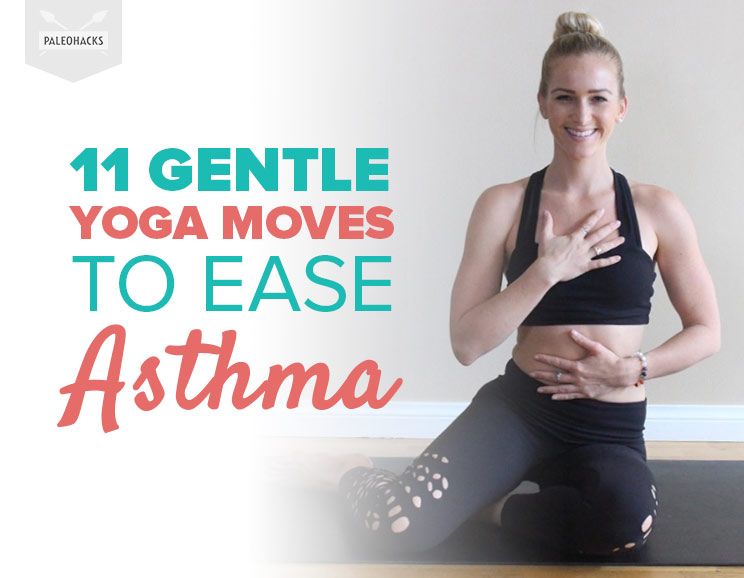

 Kick Back and Relax with This Fresh Paleo Piña Colada Sangria
Kick Back and Relax with This Fresh Paleo Piña Colada Sangria

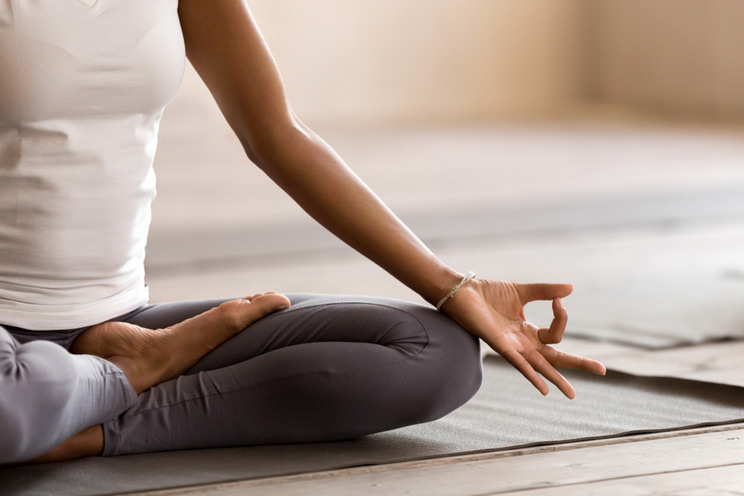
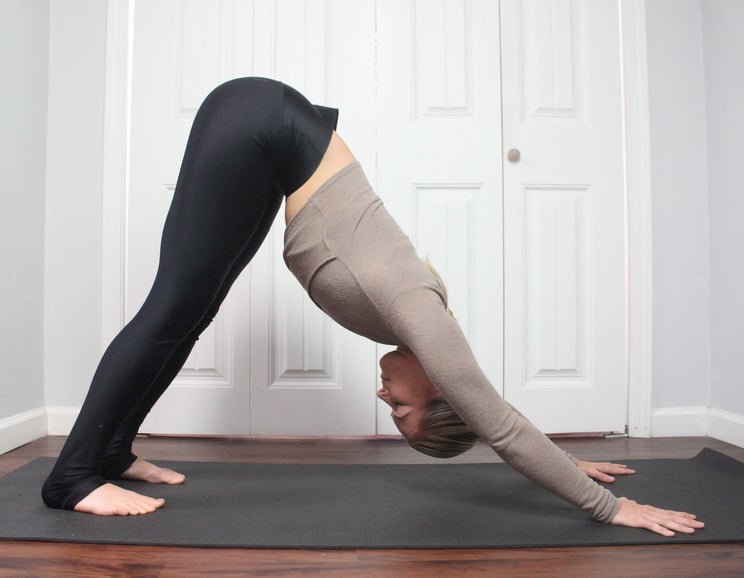
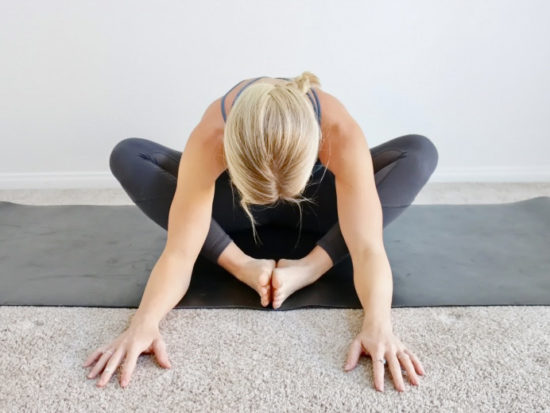
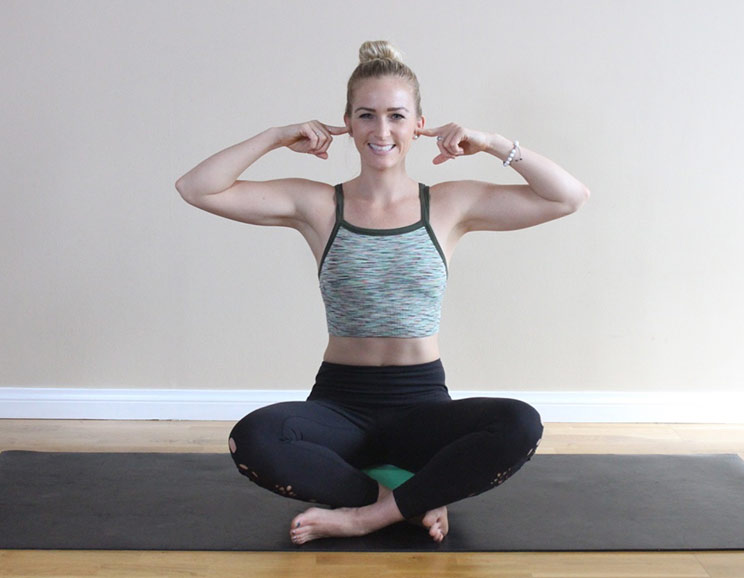
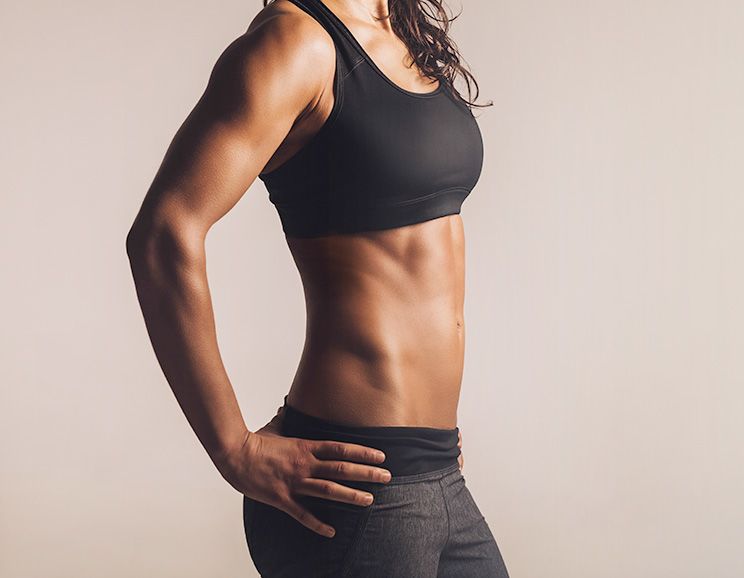
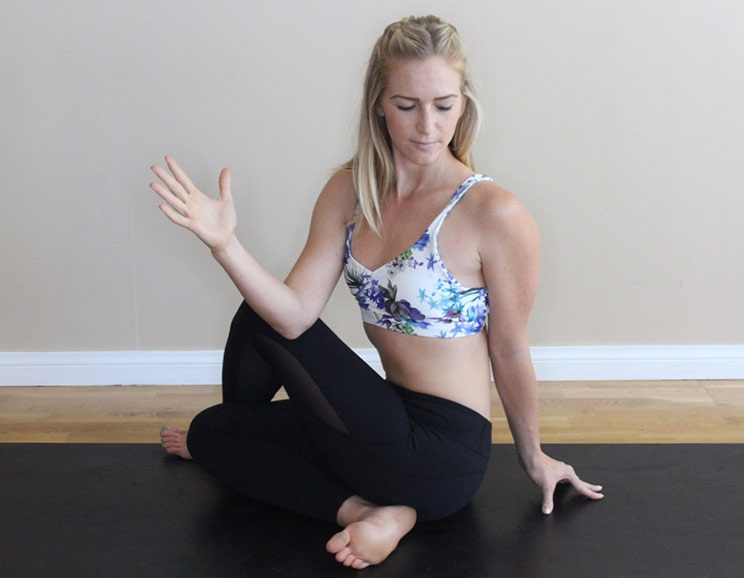
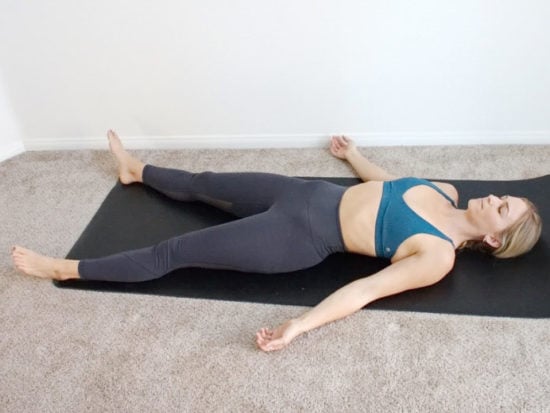
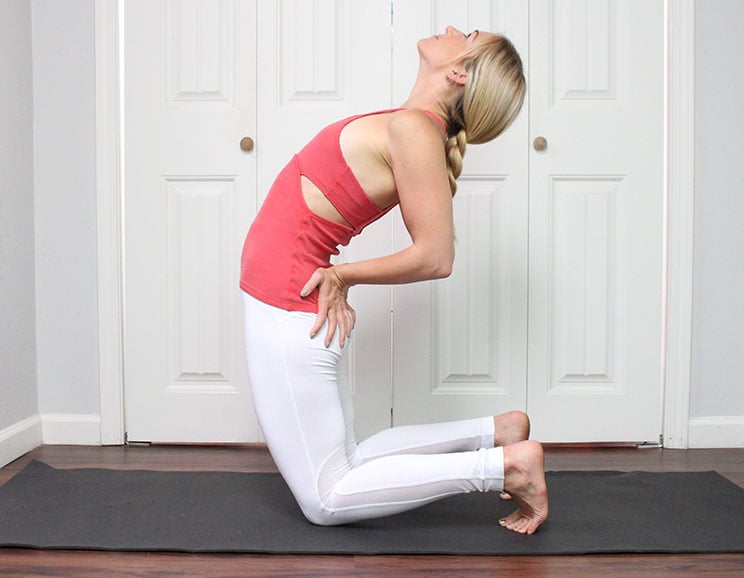
Show Comments